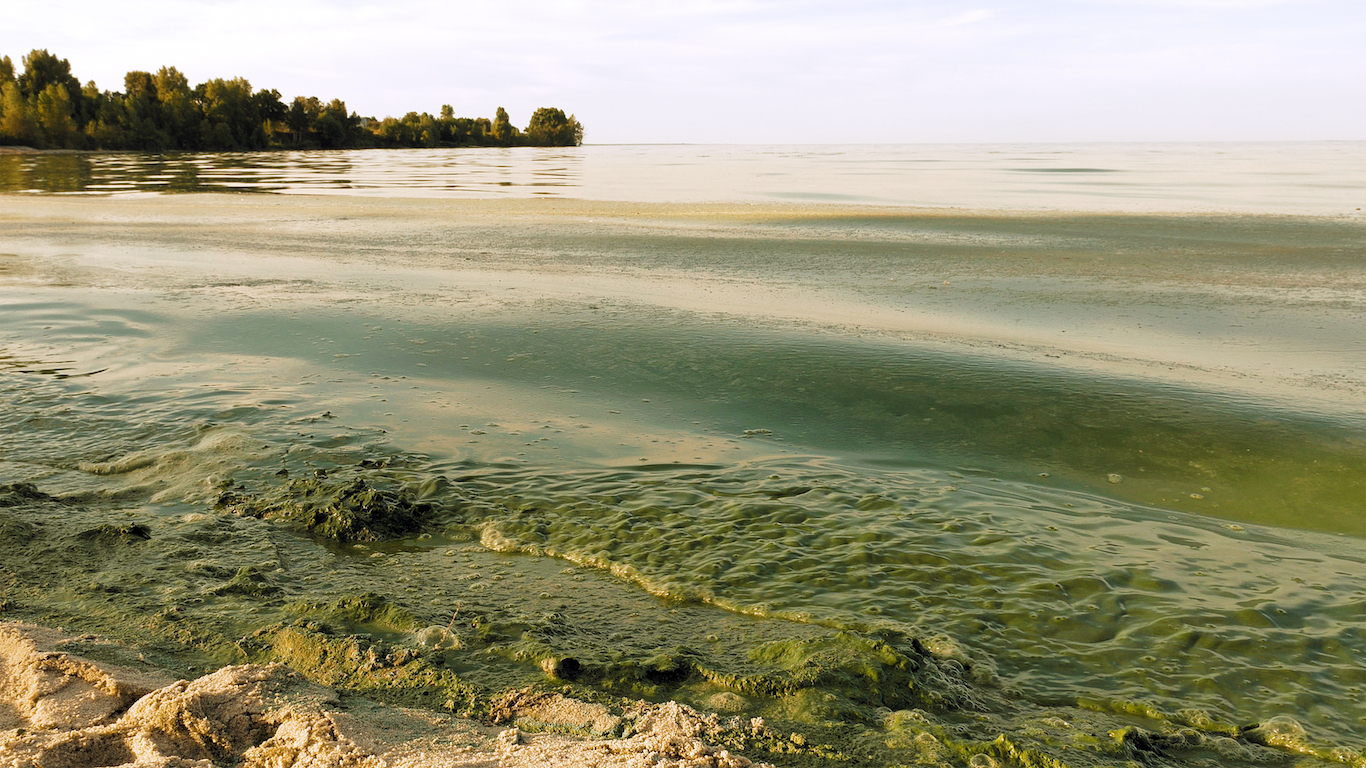Health and Healthcare
The Toxic Algae Bloom in Lake Erie Is Bigger Than LA

Published:
Last Updated:

The field of harmful algae blooms in Lake Erie has grown from 300 square miles to over 700 square miles in less than a month. The algae field, which makes up much of the western end of Lake Erie, is so large that it would submerge Los Angeles and much of its surrounding area. L.A. is about 500 square miles.
The algae blooms are caused by microcystis cyanobacteria, a bacteria which among other things creates a process which robs the water of oxygen, causing dead zones where few fish and other lake dwellers can live. The water also becomes toxic and can be dangerous to humans and animals. A number of dogs have died due to exposure to these algae blooms in lakes and ponds across the U.S.
The explosion of algae in Lake Erie is not unusual, particularly in the warmer months. Aside from the danger to fish, and animals who drink it, it creates a major problem for people who live around the lake. Nicole LeBoeuf, acting director of NOAA’s National Ocean Service, described the problems the cities face, “Communities along Lake Erie rely upon clean, healthy water to fuel their community’s well-being and economic livelihoods.” The toxic lake water is not just a theoretical issue. In August 2014, the trouble was so severe that Toledo had to cut off the water supply to 400,000 people. Besides toxic water, here are some of the other serious public health issues America is facing today.
The city of Cleveland is gearing up for the same kind of problem. In March, City Council President Kevin Kelley set up an official group to study and combat the threat. It is clear to them that although the distance from Toledo to Cleveland is over 100 miles, the toxic water is already closing that distance. Cleveland’s water supply is at risk.
Experts already have announced that the dead zone may grow as August closes and well beyond Labor Day. Cleveland and Toledo face the overwhelming issue of toxic water along their shores and very possibly in their water systems. If the bloom grows more, it could get to the point where it would submerge both LA and New York. There is evidence that as global temperatures rise, the size and intensity of these algae blooms will continue to grow. Here are 27 other effects of climate change that can’t be stopped.
If you’re one of the over 4 Million Americans set to retire this year, you may want to pay attention.
Finding a financial advisor who puts your interest first can be the difference between a rich retirement and barely getting by, and today it’s easier than ever. SmartAsset’s free tool matches you with up to three fiduciary financial advisors that serve your area in minutes. Each advisor has been carefully vetted, and must act in your best interests. Start your search now.
Don’t waste another minute; get started right here and help your retirement dreams become a retirement reality.
Thank you for reading! Have some feedback for us?
Contact the 24/7 Wall St. editorial team.